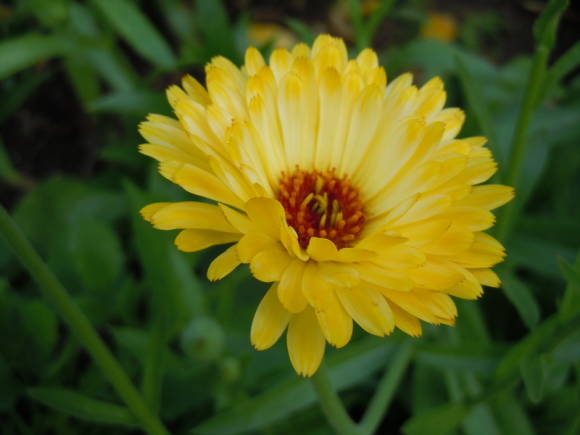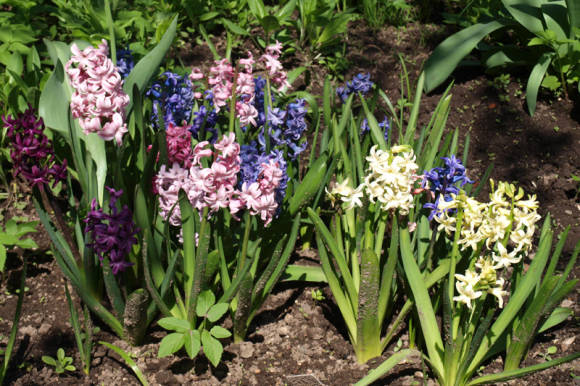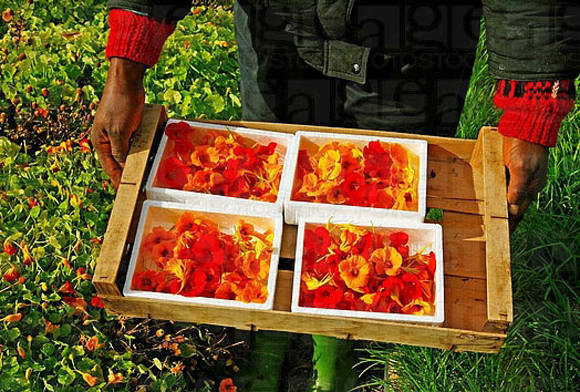 |
Albostriata |
Everyone knows and loves this cute flower. Its size is small and its beauty is quite discreet. But the flavor! Slim, charming, incomparable ...
A modest bouquet of lilies of the valley is always something more than just a bouquet of flowers, it is a declaration of love. It may be more desirable than a huge armful of expensive flowers. Prestigious roses and lilies so often personify the donor's wealth that they have lost confidence, but the lily of the valley as a gift has retained the purity and sincerity of feelings.
The symbolism of flowers is passed down from generation to generation and has been preserved for thousands of years. In pagan and biblical times, 100 years ago and today, lily of the valley means the same thing. Open the Bible to the Book of Songs of Solomon and see for yourself. In comparison with these lines breathing with love, the poems of our time, which mention the lily of the valley, seem primitive and timid!
However, in "Song of Songs" the modern word "lily of the valley" does not occur at all, but only "lily of the valleys" and "lily". Only botanists and residents of English-speaking countries will easily understand what this is about. The fact is that the old Latin name for lily of the valley isLilium convallium, which means "lily of the valley", and the modern Convallaria - can be translated as "dolinnik". However, in English, the name has remained unchanged. Lily of Valley literally means "lily of the valleys". It is easy to understand that the biblical "lilies" are actually lilies of the valley that grew among the bushes (thorns) in the valleys of the Lebanese mountains.
Botanists often unnecessarily change the names of plants, thus creating terrible confusion. Lily of the valley got it in full in this respect. But first it is necessary to tell about the very hero of this article.
Genus lily of the valley(Convallaria) belongs to the lily family (Liliaceae) and is represented by a single, highly variable, species.
May lily of the valley(Convallaria majalis). Distributed throughout the temperate zone of the Northern Hemisphere. Grows in forests, bushes, in mountain meadows up to an altitude of 2300 m above sea level (for example, in the Alps). Winter-hardy.
Herbaceous rhizomatous perennial up to 25 cm high with 1-4 ground, oblong-lanceolate or rounded, pointed at the ends, leaves up to 20 cm long. In racemose inflorescence 5-13 flowers, the diameter and length of which are 5-11 mm. The peduncle is slightly curved. The flower has a spherical-bell-shaped perianth of 6 lobes accreted to half or 2.3 lengths. They are waxy, with bent ends. The color is white or cream. Blooms in May and early June. In culture since the 15th century.
 |  |  |
Mountain lily of the valley | Lily of the valley Keiske | May lily of the valley, variety pink |
Lily of the valley, pink variety (Convallaria majalis var. rosea). Plant height up to 20 cm. Flowers are light pink.
May lily of the valley, painted form(Convallaria majalis f. picta). At the base of the filaments there are purple specks.
Some botanists identify other types of lily of the valley, although they admit that they differ little from each other.
Lily of the valley Keiske(Convallaria keiskei). Distributed in the Far East, Sakhalin, Kuril Islands, North China, Japan. Plant with 2-3 elliptically elongated (up to 15 cm) leaves.
Mountain lily of the valley(Convallaria montana). Grows in forests in the southwestern United States. Leaves up to 30 cm long. Shirokokolokolchatye flowers.
Lily of the valley(Convallaria transcaucasica). Distributed in the forests of the Caucasus. The flowers are broadly bell-shaped, large, up to 10 mm long.
The insignificant species diversity of lilies of the valley is compensated by the variability inherent in the main species. L. Maisky gave rise to many varieties. Various synonymous names often lead to confusion. More recently, a lily of the valley was called a kupena (Polygonatum), names were in use Convallaria multiflora, Convallaria odorata, Convallaria polyanthema, Convallaria rosea, Convallaria sibirica, Convallaria verticillata. Someone now mistakenly may think that these are the names of rare species. And "the province went to write." Therefore, it should not be surprising that there are no two books on floriculture, in which the lists of species and varieties of lily of the valley coincide. Personally, I trust the following list of cultivars.
 |
Flore Pleno |
"Aureovariety»("Aureovariegata", "Lineata". «Striata ","Variegata "). Leaves with yellow longitudinal chamfers.
"Berolinensis", "Berlin"(«Berolinensis ","Berlinensis "). The flowers are larger than those of the original species. The variety is widely used for forcing.
Flore Pleno(«Flore Pleno "). The flowers are white, double.
Fortins Giant(«Fortin 's Giant ","Fortins "). The plant is up to 40 cm high. The leaves are wide, strongly elongated and pointed at the ends. The flowers are large, with a particularly intense aroma, usually 22-24 per inflorescence, which is 2 times more than other varieties and species. Peduncles are local. Flowering is relatively late.
"Grandiflora"(«Grandiflora "). A variety with relatively large flowers.
"Hardwick Hall"(«Hardwick Hall "). The leaves are wide, with a yellow-green border. The flowers are large.
"Latifolia"(«Latifolia "). The flowers are pink, double.
"Prolificance"(«Prolificans "). Plant height up to 20 cm. Flowers are very small, often slightly deformed. Pedicels branch, so crowded inflorescences are formed, similar to bunches of grapes.
"Vic Pavlovskis Gold"(«Vic Pawlowski 's Gold "). The leaves are dark green with frequent white or golden stripes.
 |  |
Fortins Giant | Hardwicke Hall |
The varietal variety of lilies of the valley is not limited to this. Even in the nearest forest, if you wish and with a little luck, you can find plants that differ from the well-known cultivars and species in the color of the leaves, the size and shape of the flowers, as well as the timing of flowering. Whole clumps are formed, which are difficult to ignore. It remains a mystery why such plants are not transferred to culture.
V. Khondyrev,(Based on the materials of the magazine "Floriculture", No. 3, 2003)









